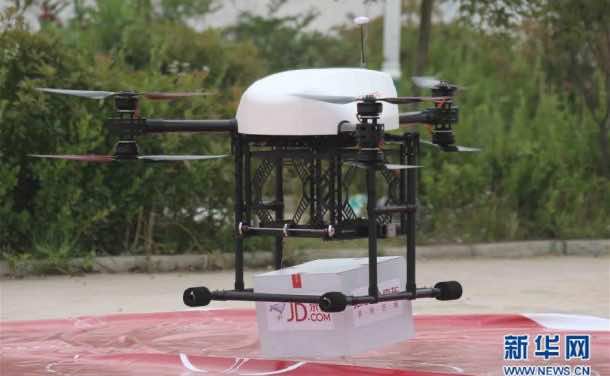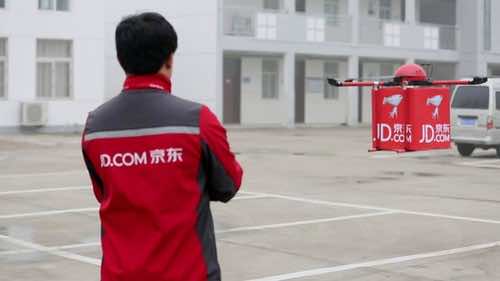Even though Amazon’s idea of drone deliveries for its products initially seemed far-fetched, it really found a corner in the online shopping enterprises and caught the attention of the bigwigs of the industry like Google.
Albeit the absurdity of the idea of a quadcopter racing through the skies with a package in tow and ringing the doorbells, the concept has already been implemented. JD.com is the Chinese version of the Amazon. This week, the company established the worthiness of opting for the drone delivery system.

The first drone delivery service of the company was launched in the outskirts of the Suqian City, in Jiangsu province. The place is also the hometown of the founder of JD.com, Liu Qiangdong and hence has some personal significance as well.
The current delivery mechanism works such that the drones pick the parcels from the central warehouse and deliver them to the rural delivery store. Thus, the actual home delivery is still being made manually. The scheme saves valuable time as a drone can fly over the winding roads in around 20 minutes while the road vehicles take much longer to navigate the same area.
The drone being employed by JD.com can carry a parcel of up to 33 pounds, speed up to 34mph (with an average 12mph) and find its way through light to moderate winds and rains.
The Chinese news publication Xinhua has reported that the cost of delivery has dropped by the use of robots. The current fee is under 7.6 US cents, almost half the original price.

In all the online shopping chains, the last leg of delivery incurs the most costs as it is a prolonged, hectic, manual, door-to-door delivery system. Therefore, a mechanism that could bring down the operational costs will definitely attract the online retailers worldwide.
The only glitch in this scheme of things is the management of deliveries in the densely populated cities, where many people might be receiving shipments simultaneously.
How do you reckon the problem can be solved?


